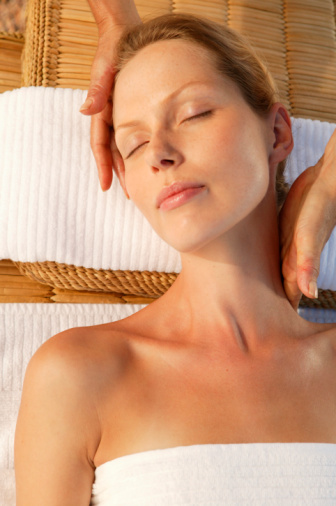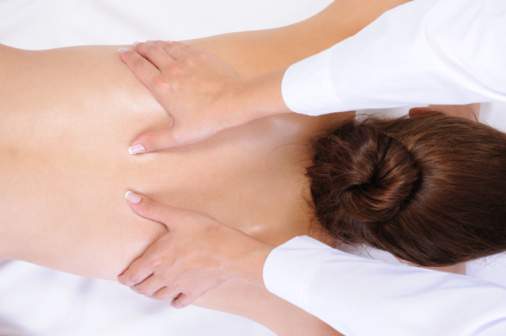 BODYWORK / MASSAGE
BODYWORK / MASSAGE
The impact of human touch is irreplaceable and can do wonders for our overall sense of well being. A healing session can help us access our sympathetic nervous system so we can calm our minds and experience a deep state of relaxation.
If we can experience this state on a regular basis our immune system has an opportunity to resolve a variety of symptoms such as: aches, pains and inflammations that keep us from feeling optimally healthy.
MY PHILOSOPHY ON BODYWORK / MASSAGE
I believe the primary element for a deeply satisfying session is the connection between the therapist and the client. The effectiveness of the bodywork session is dependent on the therapist’s ability to listen with their touch, and the client’s response to that style touch.
REASONS TO MAKE BODYWORK A MORE REGULAR EXPERIENCE
 |
 |
Relieve low-grade anxiety or depression:
Bodywork not only feels good for your body, but can help your brain feel good too by increasing production of serotonin, a hormone that aids in relaxation.
Lower your blood pressure:
Bodywork reduces blood pressure immediately afterwards—these effects can continue in the days and weeks to follow!
Sleep better:
The relaxation hormones released through massage help you spend more time in deep sleep--which is the most restorative stage of the sleep cycle.
Fight off colds:
Thanks to less stress and higher white blood cell counts--both a result of massage--clients may find themselves calling in for sick days less often.
Stop headaches:
If you suffer from frequent tension headaches, regular massages have been shown to decrease them in both frequency and severity, even with just one session a month.
What can you expect when you come to me for a session?
After the interview I leave the room to give you time to undress and lie down on the table. A large bath towel is provided to cover yourself. Staying warm and cozy is part of the experience so, I only uncover the areas that will be massaged while keeping the rest of you covered.
What bodywork techniques do I use?
Over the last twenty years I've developed a unique form of bodywork that incorporates breathing and movement techniques. Gentle movements of the spine ribs, neck etc. in a variety of ways can interrupt deep tension patterns and access the sympathetic nervous system.
I also include some massage with light to medium pressure on muscles with oil as well as some deep tissue techniques, if needed. This type of bodywork is not completely passive on your part, as I ask you to breathe in particular ways and give me feedback from time to time about pressure and sensation.
If we can access our sympathetic nervous system on a regular basis, our immune system has an opportunity to resolve aches and pains, and help us reduce inflammation. Low to medium grade inflammations can keep us from feeling optimally healthy.
The techniques I employ are:
Swedish, pressure point, deep tissue, focused breathing, Reiki and Feldenkrais movement techniques.
What kind of oils do I use?
Primarily organic pure jojoba oil non-scented, with vitamin E. This is light oil that penetrates easily and feels good to leave on the skin for extra moisturizing. It’s nutritious for the skin without being too greasy. Depending on your preference I’ll end with lavender oil around your neck and shoulder area so you can take a pleasurable scent with you.
Fee:
$100 /hr
WELL KNOWN BENEFITS OF BODYWORK/ MASSAGE
Please keep in mind that the following benefits are best maintained by receiving massage on a regular basis.
- Improves circulation by bringing oxygen and other nutrients to body tissues.
- Helps clear lactic acid and other waste, which reduces pain and stiffness in muscles and joints.
- Diminishes chronic pain
- Reduces tension headaches
- Calms the nervous system
- Lowers blood pressure
- Lowers heart rate
- Relaxes the whole body
- Promotes restful sleep
- Reduces mental stress
- Improves concentration
- Strengthens the immune system
- Assists in recovery from injuries and illness
- Enhances skin tone
- Increases flexibility and mobility
SWEDISH MASSAGE
One of the most commonly taught and well-known massage techniques, Swedish massage is a vigorous system of treatment designed to energize the body by stimulating circulation. Five basic strokes, all flowing toward the heart, are used to manipulate the soft tissues of the body. A combination of strokes can be used: kneading, rolling, vibrational, percussive, and tapping movements, with the application of oil, to reduce friction on the skin. The many benefits of Swedish massage may include generalized relaxation, dissolution of scar tissue adhesions, and improved circulation, which may speed healing and reduce swelling from injury.
DEEP TISSUE MASSAGE
Techniques that utilize deep-tissue/deep-muscle massage are administered to affect the sub-layer of musculature and fascia. These techniques require advanced training and a thorough understanding of anatomy and physiology. The muscles must be relaxed in order to effectively perform deep-tissue massage, otherwise tight surface muscles prevent the practitioner from reaching deeper musculature. It helps with chronic muscular pain and injury rehabilitation and reduces inflammation-related pain caused by arthritis and tendinitis. It is generally integrated with other massage techniques.
PRESSURE POINT for Trigger Points and General muscle tension
Trigger points are believed to be localized spasms or knots in the muscle fiber that may cause pain to be referred to other, more distant parts of the body. These knots can also contribute to restricted movement or pain in a joint.
I use my fingers to press specific areas in a muscle where I sense concentrated pockets of tightness and tension. Often these areas are painful but the pain can quickly subside. When these points are pressed for 30 to 90 seconds they release muscular tension and promote blood flow and circulation. I’ve found this technique really helpful in melting away tension.
FELDENKRAIS MOVEMENT TECHNIQUES
Gently and specificially moving indivdual vertebrae from the neck down to the low back. Also moving the ribs and sternum to maintain suppleness.
REIKI
Reiki healing is a hands-on energy healing art. It was originated in Japan in the early 20th century by Mikao Usui, who had a life-changing experience of light and energy that he recognized as reiki--sacred life force--and that awakened his innate healing abilities.
He developed a system of practices that enabled others to become effective healers. In a reiki healing session, the practitioner, trained to access and serve as a channel for the life force (ki or chi), places her hands on or just above the client’s body in order to activate healing energy within receptive points on the body.
The practitioner’s hands move progressively with a passive touch through twelve positions on the body, remaining in each position for three to five minutes. As a harmonic flow of energy is strengthened, within the client and practitioner, healing occurs through the return of physical, mental, and spiritual balance.